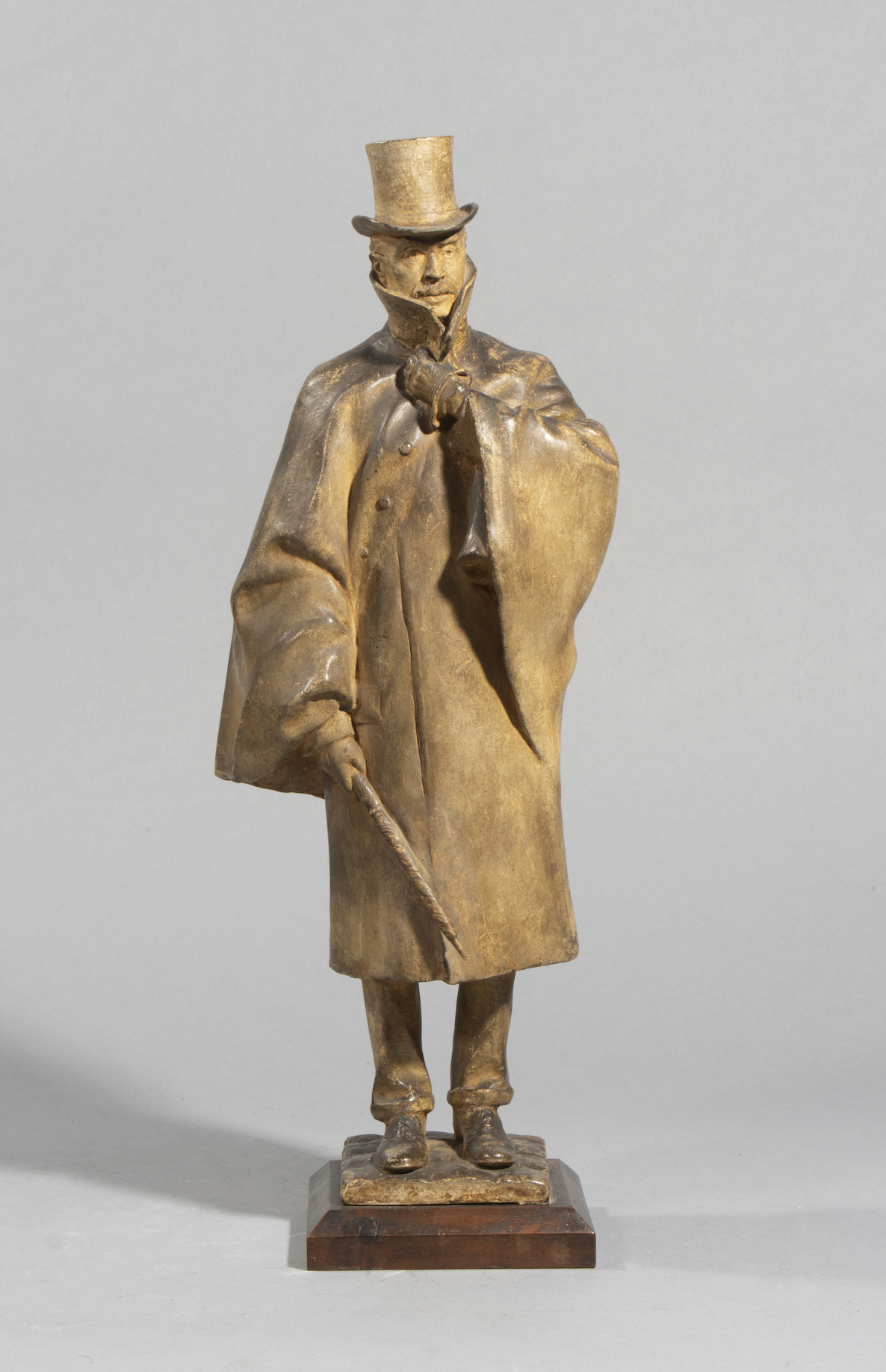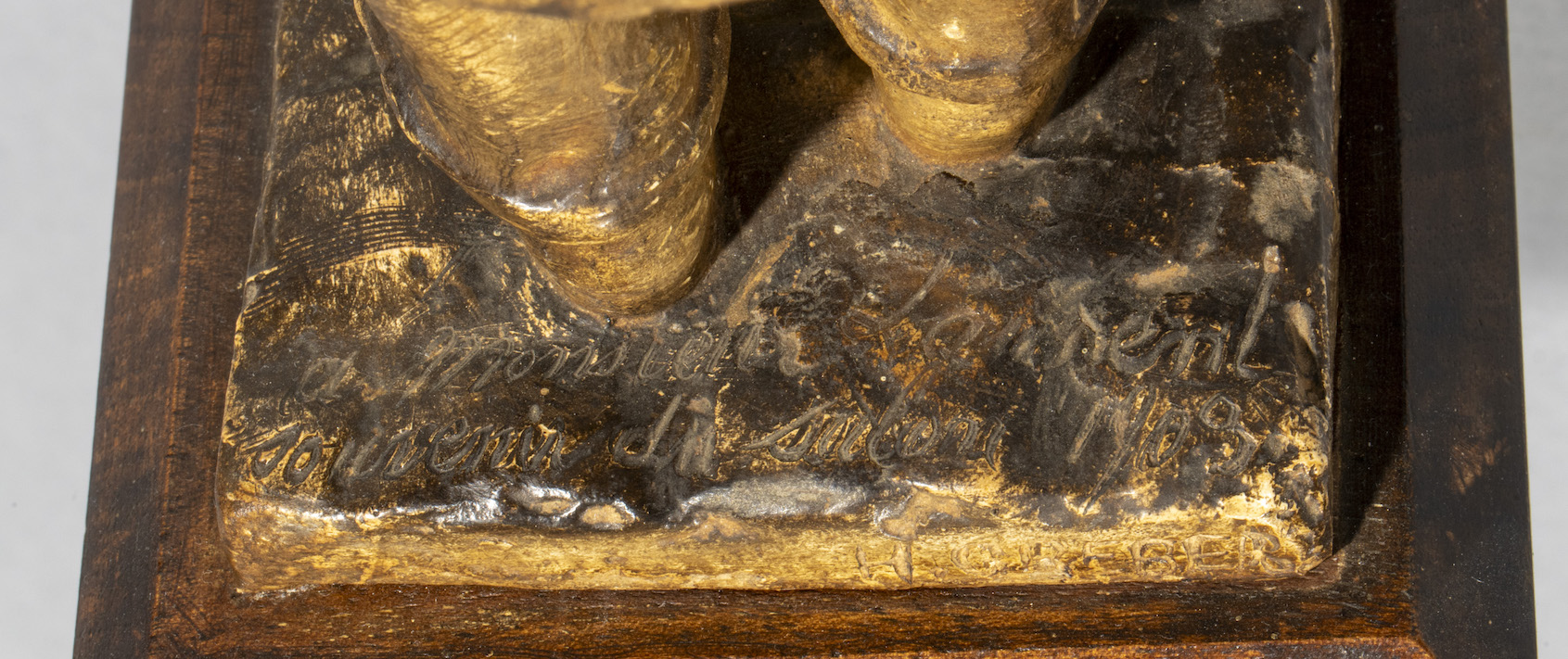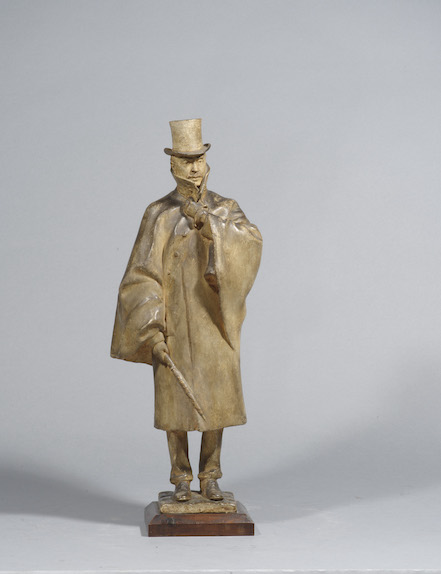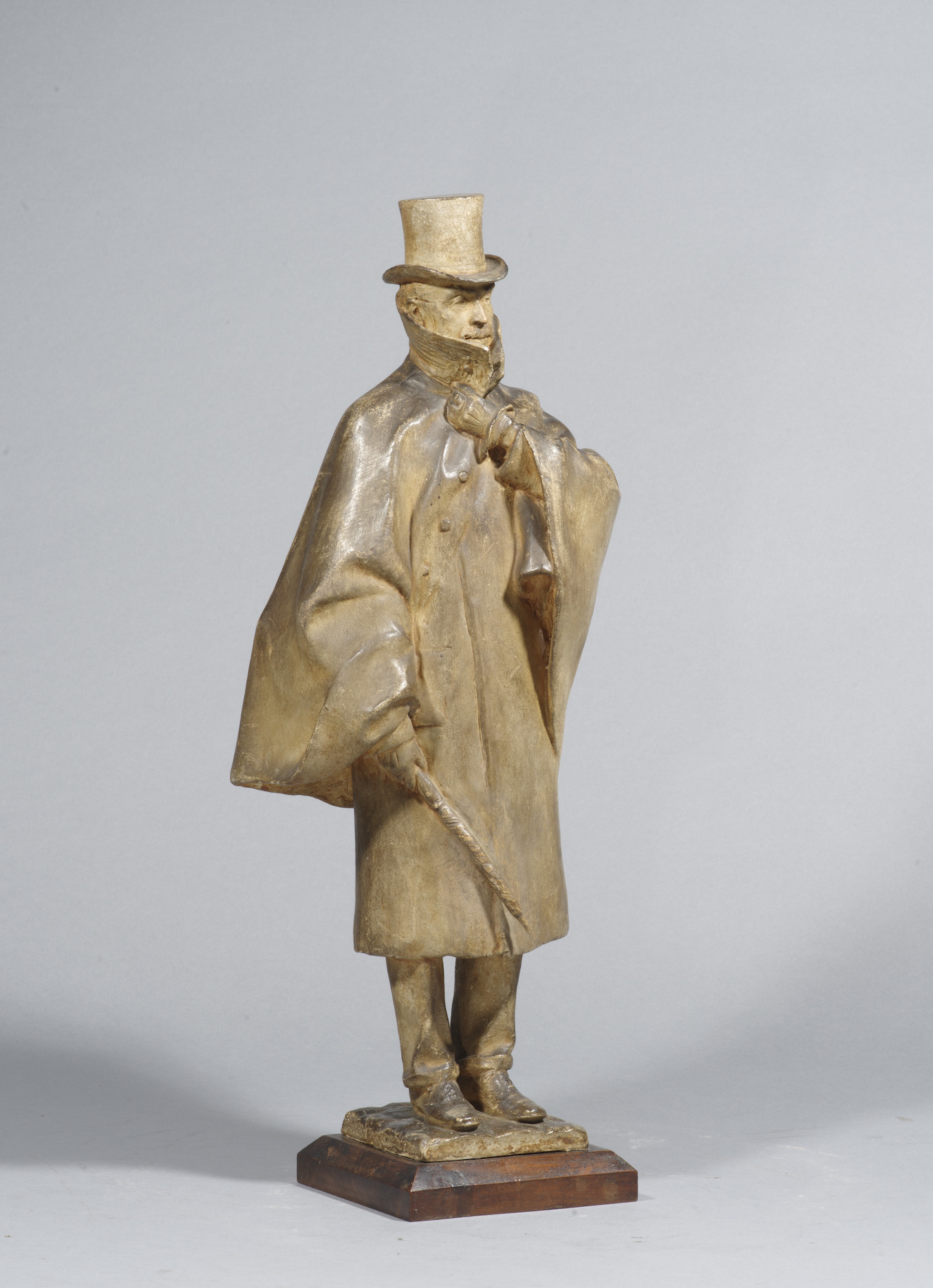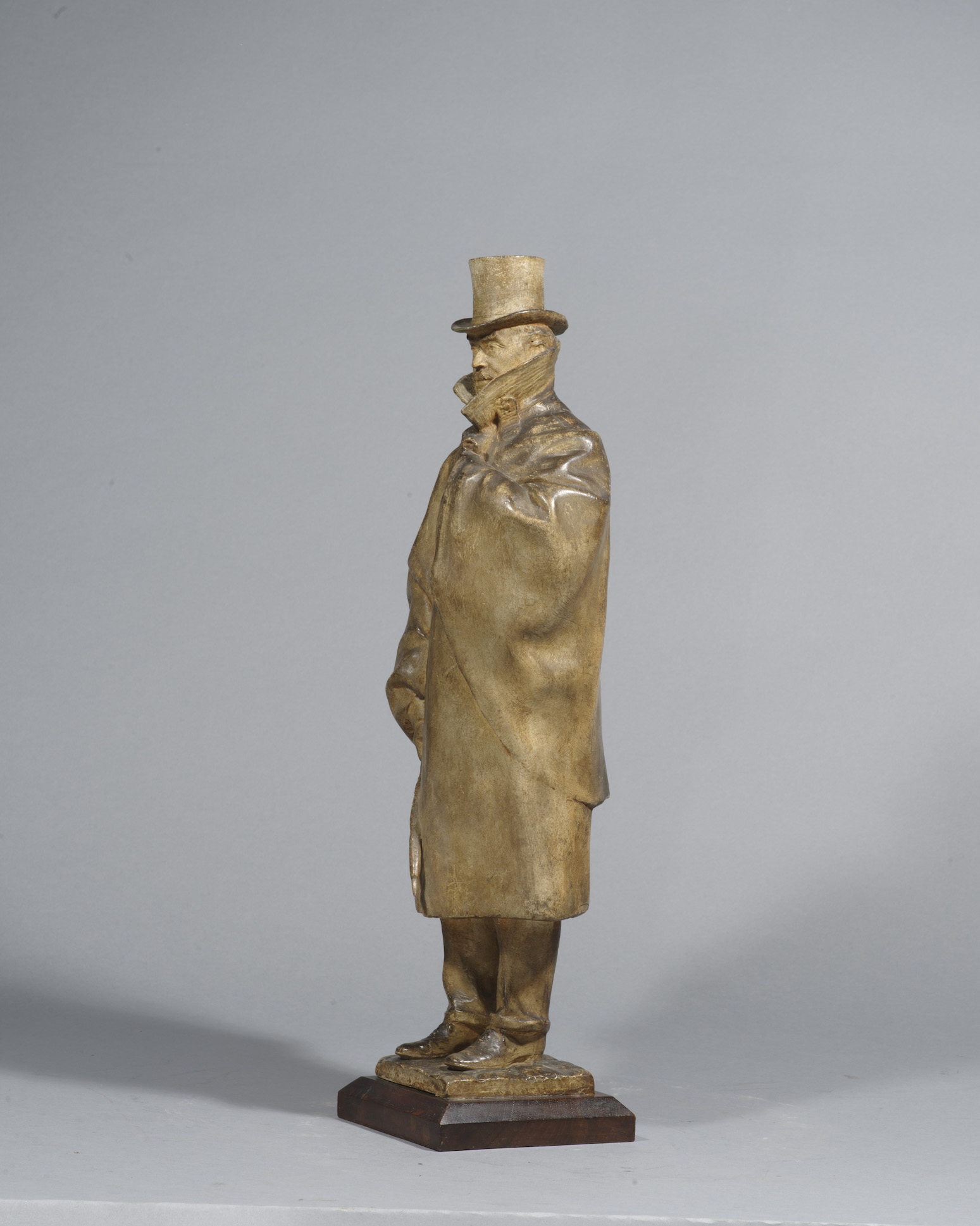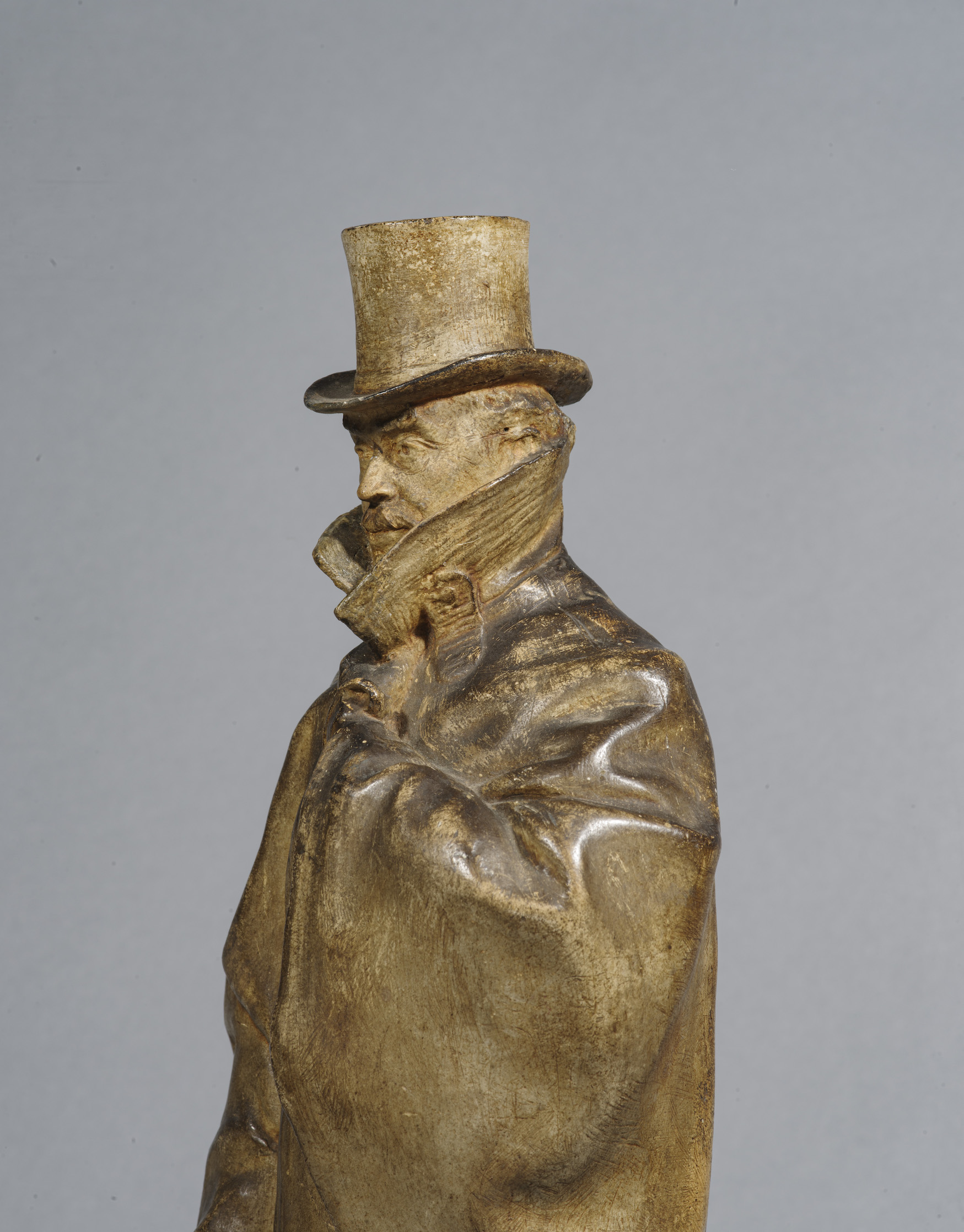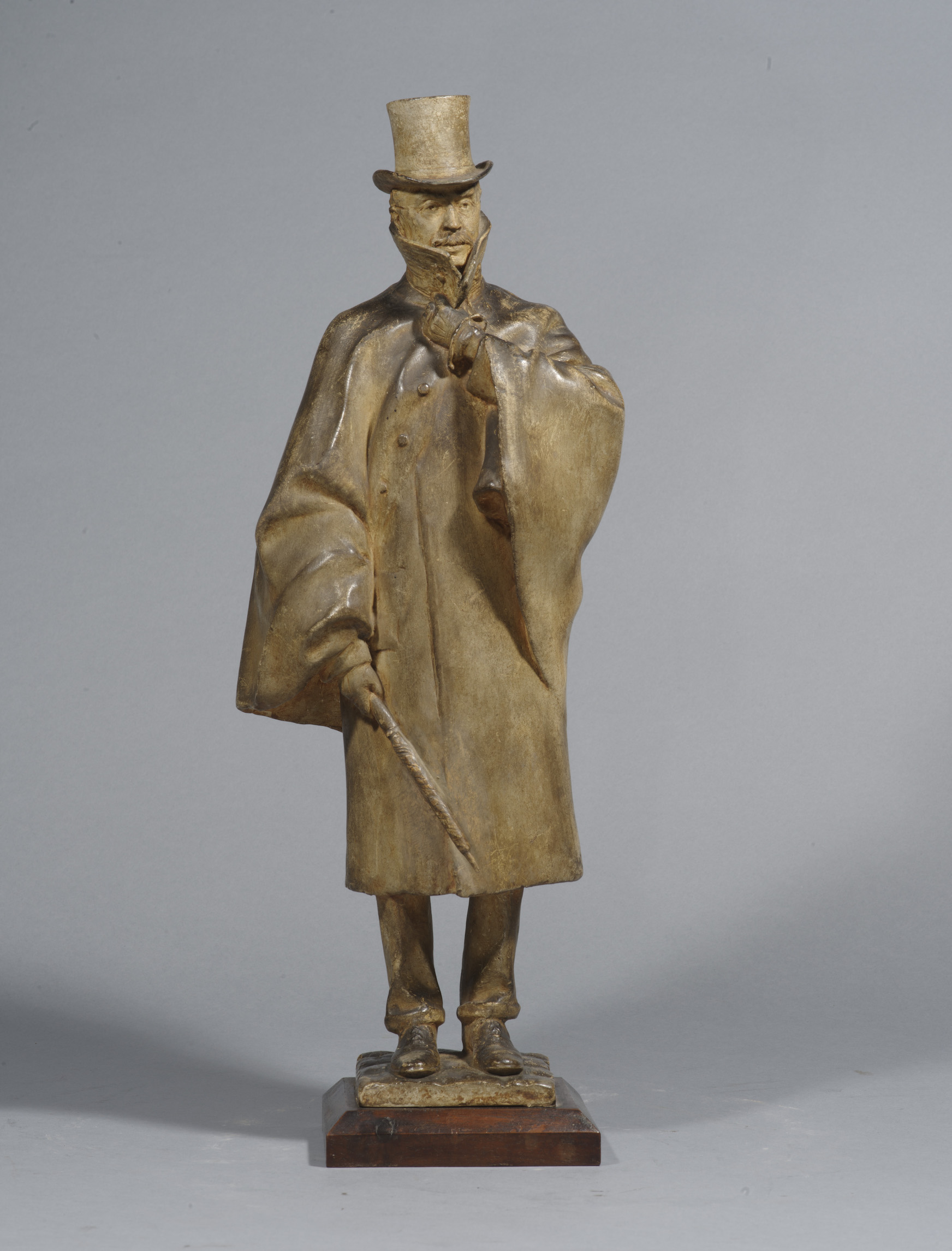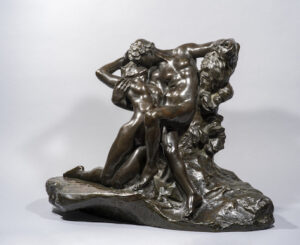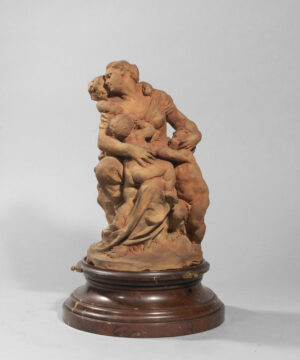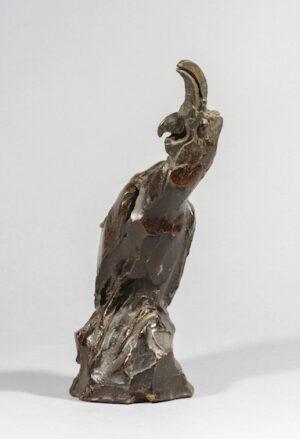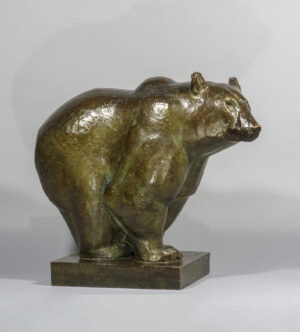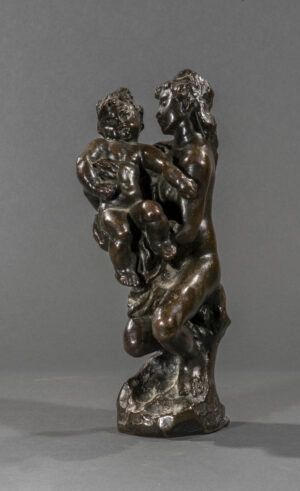Description
Although photography has so far been studied almost exclusively in relation to painting, it would be wrong to assume that sculptors were any less fond of it. One of the many advantages of using photography for sculpture was that it reduced the length of posing sessions. Henri Greber was one of the first to use this combination of sculpture and photography, in particular for his yellow marble statuette Portrait du maître Frémiet, exhibited in 1903 at the Salon des artistes français, no. 2817 (donated by the artist in 1904, Paris, Musée d’Orsay). Greber was in fact directly inspired by four photographs showing Frémiet from the four main points of view: front, back and two profiles: Emmanuel Frémiet (front), Emmanuel Frémiet (right profile), Emmanuel Frémiet (back), Emmanuel Frémiet (left profile) (Fonds Fauré-Frémiet, Paris, Musée d’Orsay). It is important to note here that the shots have been reproduced virtually as they are, but in volume. One might even be tempted to say mechanically. Professor Wolfgang Drost cites this sculpture as a rare and exciting example of the encounter between sculpture and photosculpture (Drost, 1985). The technique consists of an attempt to make an edition of sculptures using photographic means: the model was simultaneously photographed by 24 cameras evenly distributed around the perimeter of a rotunda. A pantograph was then used to reproduce the 48 profiles thus obtained on a block of clay, turning it by 15° each time. Frémiet’s four photographs show only 8 of the 48 profiles required for a photosculpture. But the principle is there, without depriving the artist of the possibility of exercising his free will and imagination with regard to the details, as can be seen from the addition of an animal jawbone and various works by Frémiet that adorn the original base.
Henri Désiré Léon Greber belonged to a veritable dynasty of artists, ceramists, sculptors and architects founded by Johann Peter Greber, a sculptor and later ceramist from the Austrian Vorarlberg, who had made his name in Beauvais, a centre of the ceramic industry since the Middle Ages. A younger brother of Charles, Henri, a pupil of Frémiet, was a talented sculptor, much appreciated not only in Paris, but also in Beauvais, where he left his mark with several statues that adorn the city’s squares and public spaces. He participated in the Salon des Artistes français until 1935. In addition to his master Emmanuel Frémiet, he portrayed other artists such as Jean-Léon Gérôme (Salon of 1904) and Antonin Mercié (Salon of 1906), two marble statuettes also preserved at the Musée d’Orsay.
Our plaster cast of his revered master, a discreet man who ended his career in honors, is a touching, dedicated souvenir of the 1903 Salon. Here, Greber has retained only the sculptor’s distinguished, wiry silhouette, wrapped in a cape and wearing a top hat, ignoring the imposing pedestal of the marble statue to which it relates. This living portrait possesses real presence, in the moving and refined tradition of portraits of artists by their peers.

